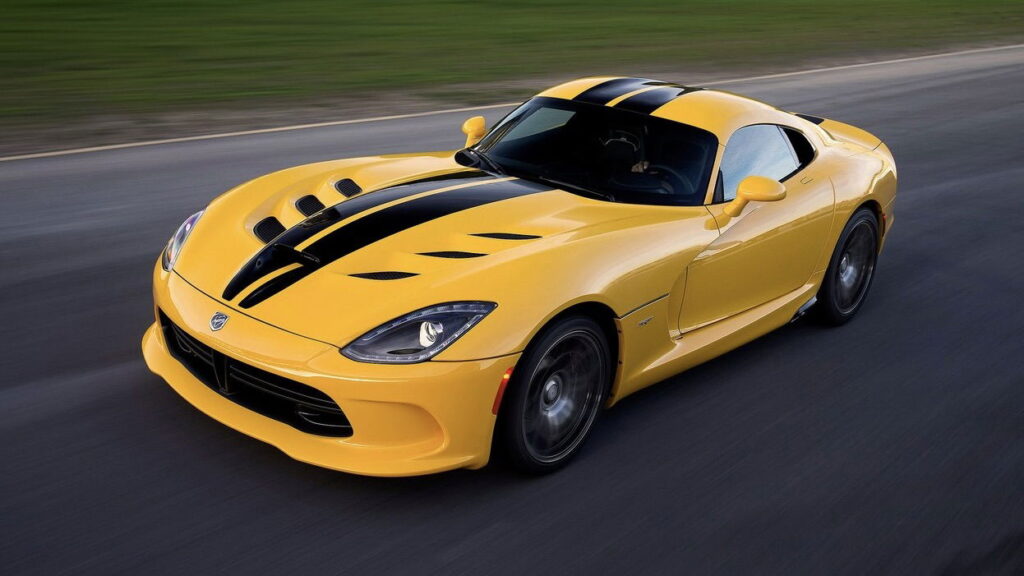Walking into a Dodge dealer in the US in the late 1980s wouldn’t exactly have given car people much cause for excitement. The company’s lineup largely consisted of small, cheaply-made front-wheel drive boxes. All that could really light an enthusiast spark were a couple of turbocharged versions of forgettable stuff like the Shadow and Daytona, both of which wore names that rather oversold their coolness.
Barely 20 years earlier, the company had been selling tyre-smoking V8 muscle cars wearing vivid paint colours with names like Plum Crazy and Top Banana. Something needed to change fast to try and get this mojo back.
Luckily, what Dodge did have were passionate people. Among them was Chrysler product development boss Bob Lutz. A through-and-through car guy, Lutz’s name pops up again and again in American automotive history, usually when it’s being celebrated for one of the enthusiast-friendly cars he helped get onto the market.
The Shelby Cobra served as inspiration for the Viper
In the late ’80s, Lutz owned an Autokraft Cobra, a replica of the 1960s Shelby Cobra complete with a snarly Roush-tuned small-block Ford V8. He was ruminating about how much he’d like Chrysler to be selling a modern equivalent when a plan started to form in his head.
Existing parts – much of it coming from Dodge’s lineup of pickup trucks – could be reworked into a fairly simple front-engined, rear-drive sports car setup. There was no reason, Lutz concluded, that he couldn’t make his modern-day Cobra dreams at least come true in concept form.
The final piece of the puzzle was the engine. While the V8 had been synonymous with American performance cars for decades, Lutz wanted to go bigger. Chrysler was working on a V10 engine for heavy-duty pickups, and this too, he figured, would be just as at home in a brawny sports car.
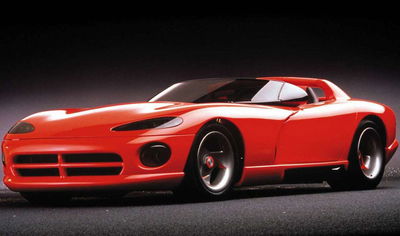
1989 Dodge Viper Concept
Lutz conveyed his idea to Chrysler design boss Tom Gale, who set to work sketching out what would become the Viper. By January 1989, at the Detroit Auto Show, the Viper concept took centre stage on Dodge’s stand. Public response was so enthusiastic that development on a production version began almost right away.
First generation (SR)
The American public got its first look at the production Dodge Viper a little earlier than planned. In 1991, the manufacturer had lined up its new Stealth coupe – a rebadged Mitsubishi 3000GT – as the pace car for that year’s Indianapolis 500.
The Indy 500 pace car has traditionally been something American-made, and the United Auto Workers trade union wasn’t happy when it found out that the Japanese-built Stealth would be taking on the role. So, at the eleventh hour, Dodge brought a pre-production prototype of its new V10 halo car to the speedway instead. The Viper had arrived.
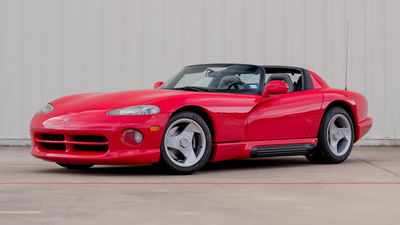
1992 Dodge Viper RT/10
The model officially went on sale at the start of 1992. This original model, with the chassis code SR, wore the suffix R/T10 – R/T was a badge from Dodge’s performance past standing for Road and Track, and 10 referred to its cylinder count.
It only came as a targa-topped convertible, and luxurious it was not. It had no traction control or anti-lock brakes and no air conditioning. In fact, it didn’t even have exterior door handles or proper windows. Designed to be run as much as possible as an open-top car, weather protection came in the form of a detachable roof panel and vinyl windows with zippers on them to access the interior door release.
What it did have was an enormous 8.0-litre V10, at the time the biggest-capacity engine fitted to a road car since before the Second World War. Although derived from the cast iron V10 Chrysler had developed for Dodge pickups, the Viper engine had its block and heads recast in aluminium by a small Italian company that Chrysler had bought in 1987 by the name of Lamborghini.
The engine developed 400bhp and 465lb ft of torque and drove the rear wheels through a six-speed manual gearbox, something that would remain the only transmission choice throughout the Viper’s life. 0-60mph took 4.6 seconds, and top speed was 165mph.
Although the US was unsurprisingly the car’s biggest market, small numbers of Vipers found their way to Europe through official channels. Here, they were badged as Chrysler Vipers, the Chrysler brand being much more familiar in Europe than Dodge.
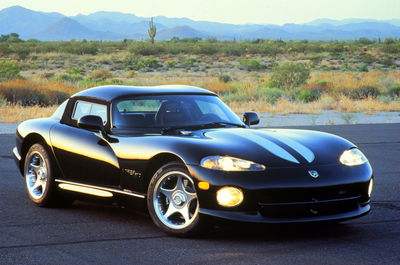
Dodge Viper RT/10 SR II
In 1995, the Viper received a mid-life facelift, designated the SR II. Along with some minor styling tweaks, a reworked exhaust system upped power to 415bhp and torque to 488lb ft.
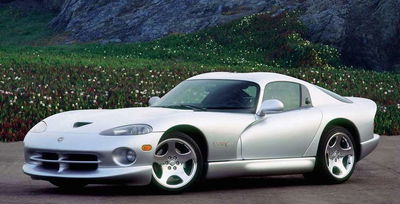
Dodge Viper GTS SR II
The following year, a coupe version, the GTS, was added to the range. This came with exotic luxuries like windows, air-con and door handles on the outside, and saw a further power boost to 450bhp (the RT/10 would get an identical figure in 1998). 1996 also saw the Viper gain the option of factory-applied racing stripes for the first time.
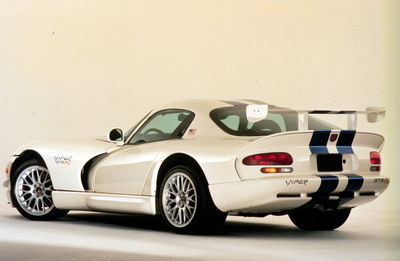
Dodge Viper GT2 Commemorative Edition
The arrival of the GTS also kicked off the Viper’s exploits in global motorsport, with Dodge, English company Reynard and French outfit Oreca collaborating on the Viper GTS-R. It was a near-immediate success, winning the GT2 class in the 1997 FIA GT Championship. This led to the arrival in 1998 of the GT2 Commemorative Edition, a special edition GTS with a big rear wing and 10 extra bhp. 100 of these were built, all in white with blue racing stripes.
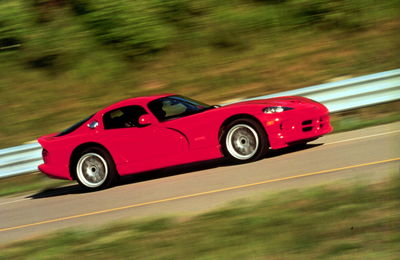
Dodge Viper GTS ACR
1999 saw the arrival of the ACR (American Club Racer) performance package for the GTS. Like the GT2, this featured an extra 10bhp – 460bhp in total – and weighed less thanks to a set of forged BBS wheels and the deletion of the air-con and stereo.
The first-gen Viper carried on for a couple more years, receiving minor changes. In 2000, it received lighter cast pistons that couldn’t withstand as much tuning as the earlier forged items, making these post-2000 cars a little less desirable among enthusiasts. 2001 saw the introduction of anti-lock brakes across the range.
In 2002, though, 10 years after it was introduced, the first-generation Viper reached the end of the road. It bowed out with 360 GTS Final Editions, all finished in red with white stripes in a nod to the Team Oreca Viper GTS-R that had seen huge success on the race track.
Second generation (ZB)
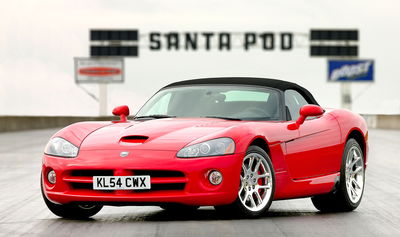
Dodge Viper SRT-10
We wouldn’t be waiting long for a second-generation Viper, with production of the new car – chassis code ZB – kicking off in 2002 for the 2003 model year. Like the original car, it launched only as an open-top roadster, although this time, it had a fully retractable fabric roof rather than a targa-top arrangement.
It was now badged as the Viper SRT-10 – SRT stood for ‘Street and Racing Technology’, the Chrysler group’s then-new performance badge. In fact, when the second-gen Viper was briefly sold through official channels in the UK, it was simply badged Dodge SRT-10, as the Viper name was already trademarked here.
The V10’s capacity was increased to 8.3 litres (handily allowing the Viper to stay top of the pile in production car engine size, because the Bugatti Veyron was a few years off with an engine a few cc bigger than the original Viper’s). In standard guise, it now made 500bhp and 525lb ft. Still sending its power through a six-speed manual, 0-60mph now took 3.9 seconds, and top speed was 190mph.

Dodge Viper SRT-10 Coupe
As with the first-generation car, it would be a few years before a coupe version arrived. It turned up on the scene in 2005, now with 510bhp and 535lb ft. That dropped the 0-60mph time to 3.7 seconds and upped the top speed to 193mph.
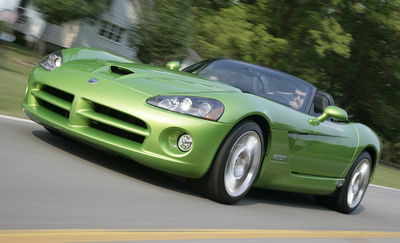
Dodge Viper SRT-10 ZB II
Production of the pre-facelift ZB wound up in 2006, and the Viper took a brief break as a round of updates were prepared. When it returned in 2007 as the facelifted ZB II, things hadn’t changed much visually, but mechanically, it was another story.
Engine capacity had been upped again to 8.4 litres, and the cylinder heads and exhaust system were new. Power and torque jumped to 600bhp and 560lb ft, and a new gearbox (still a six-speed manual) was fitted to cope with this increase. Top speed for both the coupe and roadster was now 202mph, and 0-60mph was down to 3.5 seconds.
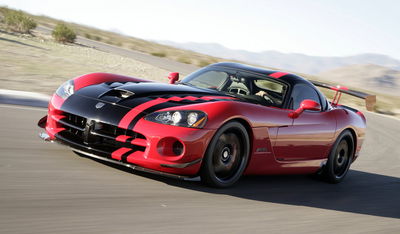
Dodge Viper SRT-10 ACR
The Viper still had more performance to give, though. That arrived in 2008 with the return of the ACR badge on an altogether more serious car than before. The engine and gearbox were unchanged, but it was lighter and harder and wore an extravagant adjustable aero kit that developed a massive 450kg of downforce at 150mph. Completing the changes were adjustable KW coilover suspension and massive carbon ceramic brakes.
The draggy aero setup dropped the top speed to 180mph, but the ACR lapped the Nürburgring Nordschleife faster than the Maserati MC12 and Pagani Zonda F (and went faster still with a revised aero setup in 2010).
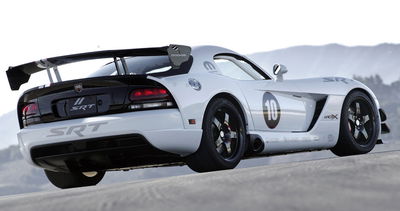
Dodge Viper SRT-10 ACR X
The ACR spawned a couple of special editions, namely the Voodoo Edition with a special black and red paint scheme and the 1:33 Edition that celebrated its lap time around Laguna Seca. An even more hardcore, track-only variant, the ACR X, arrived in 2010. Power was up to 640bhp, weight was down by 54kg, and the aero and suspension were even more aggressive.
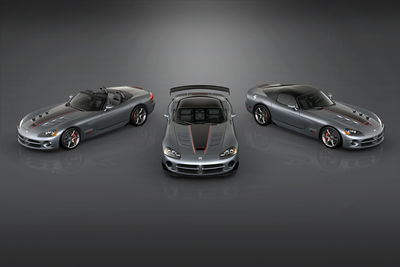
Dodge Viper SRT-10 Final Editions
2010 was also the final year for the ZB Viper, the end of production marked by 50 grey-and-black Final Editions, split between the roadster, coupe and ACR versions.
Third generation (VX)
For a while, there was no Viper. Chrysler had declared bankruptcy in 2009, and the world was still reeling from the effects of the 2008 financial crisis, making a hugely thirsty V10 sports car an increasingly difficult sell.
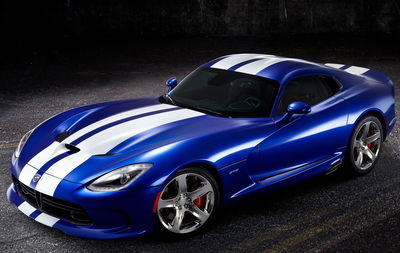
SRT Viper GTS
Even amid all this, though, Chrysler higher-ups were adamant the car would return, and at the 2012 New York Auto Show, it did just that. The Dodge Viper was back, except it wasn’t, because the car was now officially badged as the SRT Viper, with Chrysler attempting to spin the performance badge off into its own brand.
The third-gen car – chassis code VX – was launched as a coupe and stayed that way for its whole life, never gaining a factory convertible option (although aftermarket conversions exist).
It was still a Viper through and through, though, featuring the same 8.4-litre V10 – now with 640bhp and 600lb ft – and six-speed manual. Available in both standard and more luxurious GTS trim, 0-60mph was dealt with in 3.5 seconds, and top speed was 206mph.
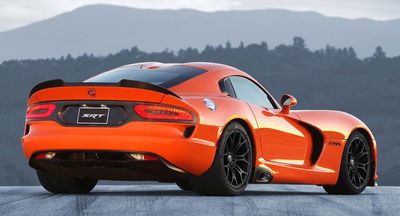
SRT Viper TA
It didn’t take too long for a higher-performance variant to arrive, with the TA – Time Attack – arriving on the scene in 2013. Power was up slightly to 645bhp, but the biggest changes came to the chassis. The brakes, dampers and anti-roll bars were upgraded, new forged alloys were wrapped in stickier Pirelli P Zero rubber, it weighed 20kg less than the standard car, and a new front splitter and rear spoiler were said to contribute to a ludicrous 700 per cent increase in downforce at 150mph. 159 of these harder, faster Vipers were produced.
2015 brought further changes to the Viper. Chrysler’s short-lived experiment with trying to make SRT its own thing was ended, and it became a Dodge once again. Power was increased to 645bhp across the board, and a second, even more aggressive TA variant – badged the TA 2.0 – was added. This received even more serious aero plus further enhancements to the brakes and suspension.
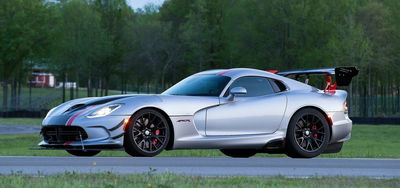
Dodge Viper ACR
This still wasn’t the most hardcore VX Viper, though, because later in 2015, the ACR returned once more. Again, the engine was unchanged, but the list of chassis hardware could have been taken straight from a race car. Carbon ceramic brakes, specially-developed Kumho Ecsta tyres and 10-way adjustable Bilstein suspension all helped create a serious rival to stuff like the Porsche 911 GT3 RS.
The headline, though, was once again downforce: with the optional ACR Extreme aero package, the VX ACR made a stated 907kg of downforce at its top speed of 177mph. Its Nordschleife lap time of 7min 1.3sec is quicker than cars like the Mercedes-AMG GT R Pro, Lamborghini Huracan Performante and McLaren 720S.
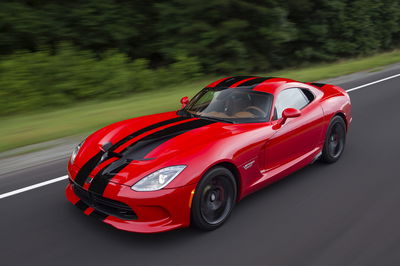
Dodge Viper GTC
Sadly, the VX Viper was never a huge commercial success. In addition to introducing a mid-tier GT trim in 2015, Dodge also launched the GTC version in an attempt to boost sales. This gave buyers pretty much free rein in terms of colour scheme, plus expanded interior options and aero choices pinched from higher-performance Vipers. All in, there were around 25 million possible spec combinations, and once a buyer locked theirs in, nobody else could have it.
The GTC programme wasn’t enough to save the Viper, though, and in 2015, Chrysler announced that production would end for good within the next two years. A run of five special editions was produced throughout 2016-17 to see it off, and in August 2017, the last ever Viper was produced at the Detroit factory that had been its home since 1995.
Officially, slow sales were to blame for the Viper’s death, and that certainly seems to be the case because as recently as 2024, somebody bought a brand-new Viper that had been sitting unsold in a dealership for at least six-and-a-bit years. It’s also been mooted that the car wouldn’t meet then-incoming safety regulations, though.
Will there ever be another Dodge Viper?
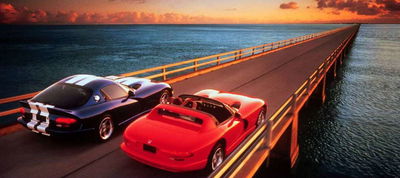
Dodge Viper GTS and RT/10
Sadly, it doesn’t seem likely. Despite Google feeding you AI-generated slop pertaining to be the ‘2025 Dodge Viper’ when you search the model’s future, any suggestions of a new Viper appear to have no factual basis whatsoever.
In the years since production ended, there’s not been even the slightest hint of the model’s return from anyone at Chrysler, which is now part of the massive Stellantis group. Sports cars – especially ones with gigantic V10 engines like the Viper – are simply becoming harder to get into production from both a commercial and regulatory standpoint, so even if the name ever was to hypothetically return (and to reiterate, it probably won’t) we suspect it would look very different to what came before.
So, no, there probably won’t be another Viper. But at least we have three brilliant generations (or five, depending on how you categorise them) to look back on. The Viper was always a car that ploughed its own furrow, usually with a gigantic cloud of tyre smoke in tow. We will never see its like again, but we’re very glad it existed.
Read the full article here


